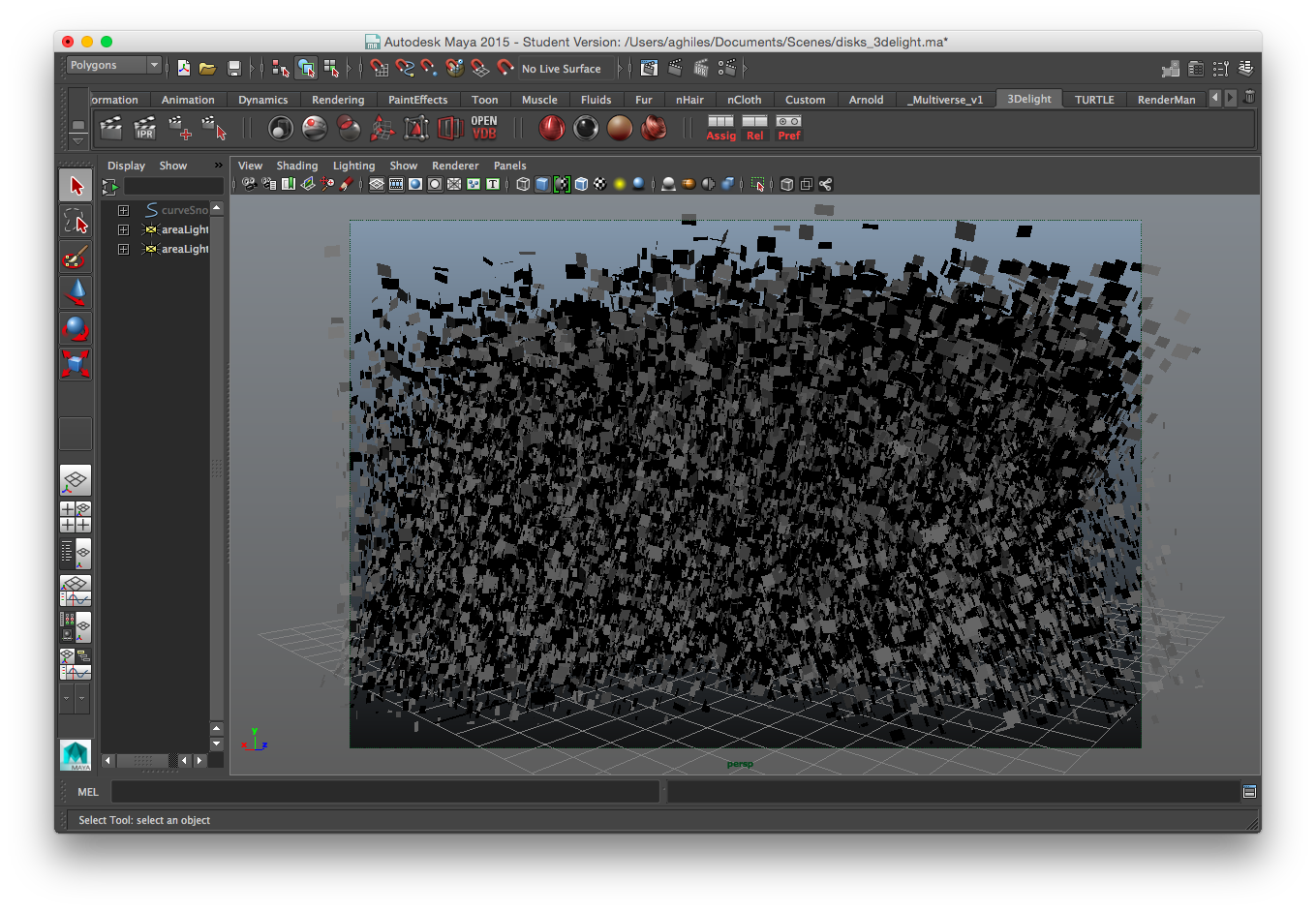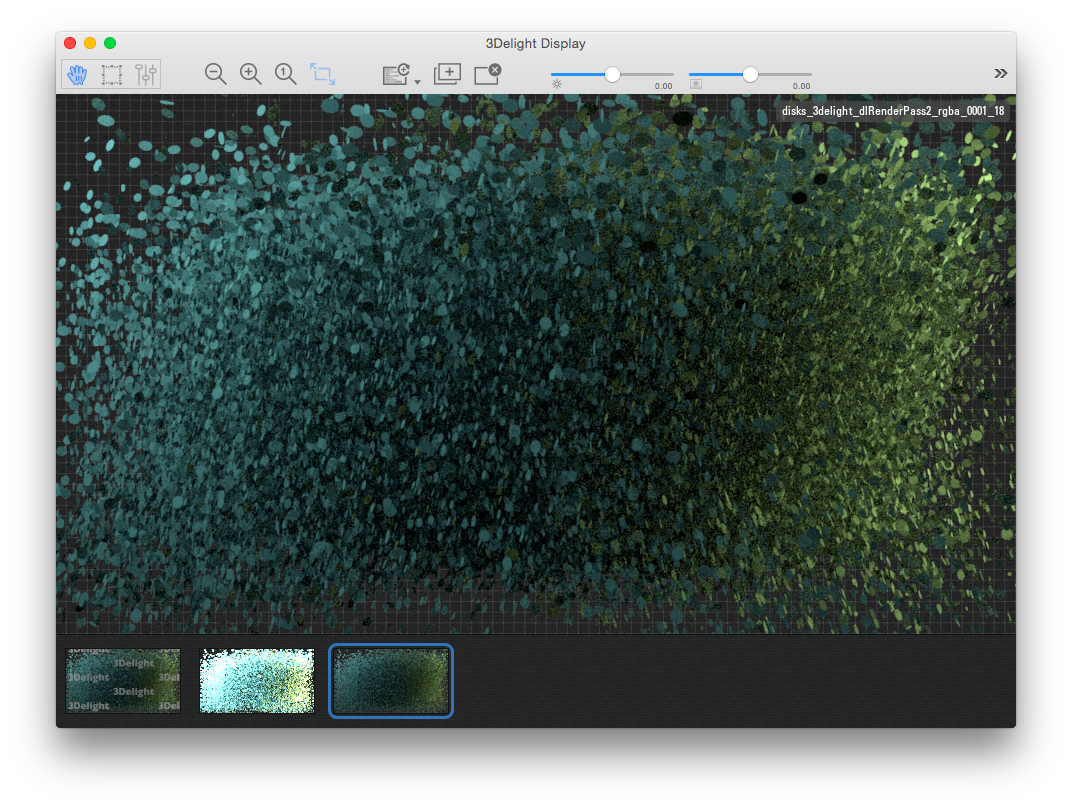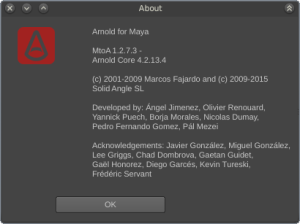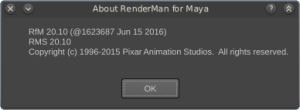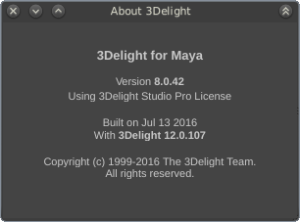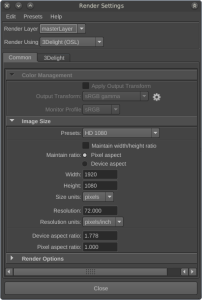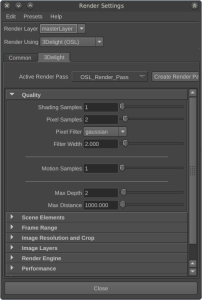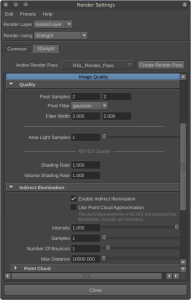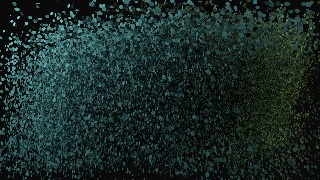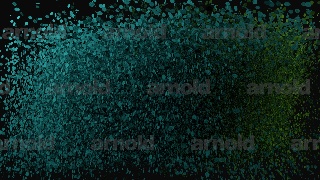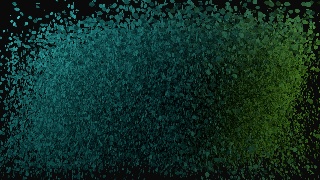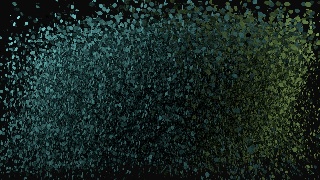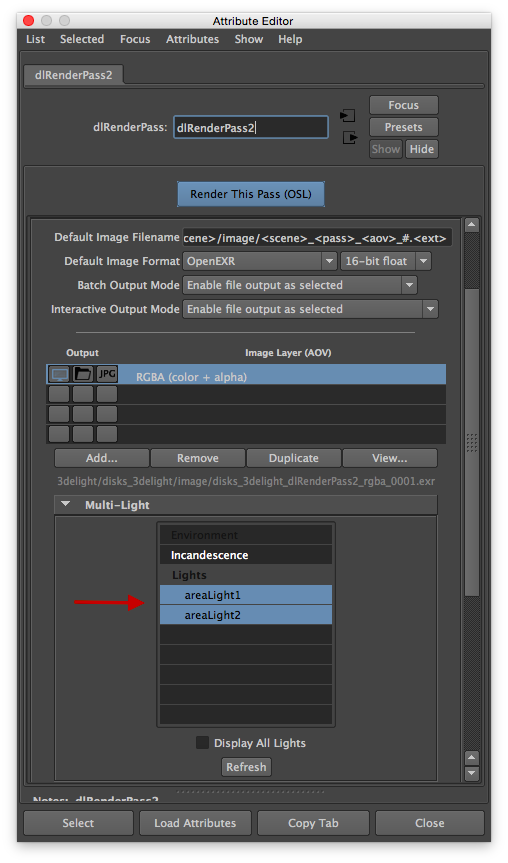The goal here is to We will compare 3Delight's OSL rendering core with two other renderers (Arnold and RenderMan/RIS) using C++ for shading (namely Arnold and RenderMan/RISand also to our legacy RenderMan compliant renderer (optimised RSL SIMD just-in-time compiler based). Since all renderers are quite different, we will try to get to a most common denominator, in terms of setup, to be able to compare apples to apples. We want to know: can we go as fast, in OSL, as highly optimized C++ ray-tracer? How does OSL compare to our optimized optimised RSL SIMD just-in-time compiler?
In this particular case, we will be constructing an artificial test scene that simulates foliage. Rendering foliage is a good stress test for many reasons:
- Many shader evaluations, including for transmission rays. No "opaque" object tricks are possible because leaves are usually modeled using cutouts. Shader evaluation efficiency is important.
- Many short ray probes necessitate a good integration and coordination between shading system and space partitioner.
- Any bottlenecks in the ray tracer tend to be amplified and adversely affect performance.
The Scene
The scene is designed in such a way as to put all the contenders in an even playing field and get meaningful performance numbers. For example:
- We will just use diffuse reflectors.
- We will disable any adaptive sampling so to make sure we have very close ray-counts.
- We will use only one diffuse bounce. This will circumvent some complex variables from the equation (Russian roulette and other tricks of the trade). When looking at the statistics, all renders have a path length of 3.
- The scene is easy to load, setup and render. It is available for all tested renderers.
All renders are done in Maya 2015 Extension 1.
The scene looks quite ugly in the viewport: just a large collection of rectangles generated using PaintEffects.
The render looks slightly better. Squares are transformed into circles using a cutout.
The scene is lit by two large area lights from each side.
The cutout is done using a Maya Ramp.
In Arnold it is connected to "opacity", in RenderMan to "presence" and in 3Delight to "transparency" !
(3Delight shown here)
The Renderers
| Arnold | RenderMan/RIS | 3Delight OSL | 3Delight RSL | |
|---|---|---|---|---|
| Version |
| |||
| Technology | Unidirectional path tracer. | Using unidirectional path tracer. Other options are available but not useful for this test. | Unidirectional path tracer. | Undirectional path tracer |
| Shaders | C++ | C++ | OSL | RSL |
The Methodology
We will be testing the wall clock time for all renderers. Every renderer will be run 3 times in succession and the average time will be taken. We make sure that nothing is running on the machine so not to slow down the poor renderers. The render is launched from Maya 2015 Extension 1. We are using a mid level Linux machine for our tests:
% lscpu
| Code Block |
|---|
Architecture: x86_64 CPU op-mode(s): 32-bit, 64-bit Byte Order: Little Endian CPU(s): 16 On-line CPU(s) list: 0-15 Thread(s) per core: 2 Core(s) per socket: 4 Socket(s): 2 Vendor ID: GenuineIntel CPU family: 6 Model: 26 Stepping: 5 CPU MHz: 2395.000 BogoMIPS: 4787.24 Virtualization: VT-x L1d cache: 32K L1i cache: 32K L2 cache: 256K L3 cache: 8192K |
% free -m
| Code Block |
|---|
total used free shared buffers cached Mem: 11984 8139 3844 0 151 4728 -/+ buffers/cache: 3259 8725 Swap: 0 0 0 |
The Setup
Each renderer uses a different sampling strategy and how rays are distributed between each sampled component. We selected a setup that produces nearly the same number of rays in all renderers. Look wise, it was easy to obtain very similar renders between Arnold and 3Delight. We had to boost area light contributions in order to get a similar lighting in RenderMan/RIS.
More details:
- We use non-normalized area lights. This is because 3Delight OSL doesn't support normalized lights yet.
- There is a slight difference in tint between Arnold and 3Delight. We think it's due to differences in color management between the two renderers.
- RenderMan/RIS area lights sources had to be set with higher intensity. We are unsure why.
- RenderMan/RIS has very different diffuse lighting component. Again, we are unsure why. One hint might be how the shading normals are treated treated.
| Common | Arnold | RenderMan/RIS | 3Delight OSL | 3Delight RSL | |
|---|---|---|---|---|---|
| Version | |||||
| Remarks | Area lights have 1 sample each. | Min Samples = Max Samples. | Only shading samples to set for sampling BRDFs. 3Delight OSL takes care of the rest. | The RSL path-tracer traces much more rays with the same settings. Refer to normalized performance only |
The Results
| 3Delight OSL | Arnold | RenderMan/RIS | 3Delight RSL | |
|---|---|---|---|---|
| Image | ||||
| Total number of rays | 28.5 Millions | 31.6 Millions | 30.9 Millions | 37.4 Millions |
| Time on Linux | 33 seconds | 50 seconds | 74 seconds | 179 seconds |
| Compared to 3Delight OSL * |
| 1 | 1.36 times slower | 2.07 times slower | 4.16 times slower |
* Taking into account the total number of traced rays
Multi-Light Rendering Performance Test using 3Delight OSL
3Delight's multi-light feature allows you separate lighting components per light or per sets of lights. It is a subset of the LPE feature, in OSL parlance. Multi-light rendering is enabled in the Image Layers section of the OSL render pass; just select the RGBA layer and select the two area lights. This test evaluates the performance degradation when using this feature.
Select the two area lights to split the RGBA into two additional outputs (one for each area light)
In the snapshot of 3Delight Display below, you can see the resulting beauty (top left) and the two area lights lights:
Render time is almost identical, ; 34 seconds for the entire render.
Conclusion
- 3Delight's OSL-based path-tracer provides outstanding performance results. Building a rendering core around the OSL shading system, as opposed to just "integrating" OSL in the renderer, seems to have given 3Delight a good performance advantage.
- Multi Light in 3Delight doesn't have a perceptible adverse effect in this test (although from experience, rendering much more Multi Light AOVs, one can expect a 1-3% penalty).
- This particular test shows the limitations of RSL shaders and the limitations of the JIT architecture they use.
Resources
Here are the links to reproduce the tests on your system.
| Arnold | 3Delight OSL | 3Delight RSL | RenderMan/RIS | ||
|---|---|---|---|---|---|
| Maya Scene (ASCII) | disks_arnold.ma | disks_3delight.ma | disks_3delight.ma (same) | ||
| Statistics | stats_arnold.1.txt | stats_3delight.txt | |||
| EXR images (linear) | disks_3delight_RSL.exr | disks_prman.exr |
3Delight packages used for testing:
